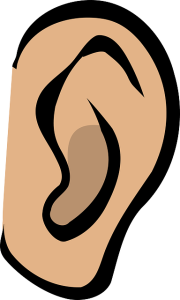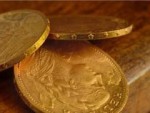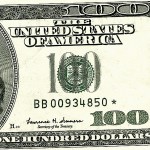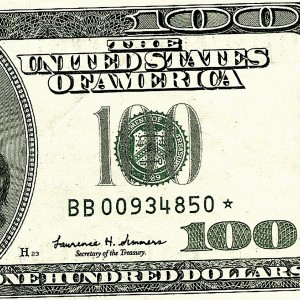by Linda Folden Palmer, DC– ICPA.org:
Causes of Ear Infections
Middle ear infections are on the rise. The ailment, also known as otitis media, has become far more prevalent in children throughout the twentieth century, increasing 150 percent between 1975 to 1990 alone. This dramatic increase illustrates the parameters of wise antibiotic use and its abuse, while at the same time revealing the effects of breastfeeding and formula.
The middle ear is the part of the ear that is enclosed behind the eardrum. A tiny tube, called the eustachian tube, drains any fluids from the middle ear into the throat. Colds and episodes of allergic runny nose, due to airborne allergens or allergies to cow’s milk or other foods, block this eustachian tube with mucus and inflammation. When this tiny mucous-membrane-lined canal is closed off, inflammatory fluids build up in the middle ear cavity (serous otitis media), sometimes referred to as effusion. Over time, passage of nasal and throat bacteria into this tube, from pacifier use or especially when a child is lying on his back, can seed the middle ear. Bacteria can then multiply to large numbers when finding a friendly fluid-filled middle ear environment, creating painful infection (acute otitis media).
The major source of these infections is threefold: the withholding of protective mother’s milk; antibiotic treatment for mild or non-bacterial ear conditions; and inflammatory reactions to certain foods, particularly cow’s milk.
The occurrence of otitis media is 19 percent lower in breastfed infants, with 80 percent fewer prolonged episodes. The risk of otitis remains at this reduced level for four months after weaning and then increases. By 12 months after weaning, the risk is the same as in those who were never breastfed. In addition to providing general immunities to the infant, breastmilk also provides specific antibodies that prevent otitiscausing bacteria from attaching to the mucous walls of the middle ear.
Misguided Concerns About Infection
The presence of fluid in the middle ear from chronic or acute conditions reduces a child’s capacity to hear. This fluid muffles sounds but does not damage the hearing mechanism, so hearing returns once the fluid is gone. While permanent hearing damage does not occur from acute or chronic otitis, chronic interference with hearing can delay language development.
In some cases of acute infection, treated or not, the eardrum may rupture. While fear is generated around this possibility, the rupture allows the pus to drain and the middle ear to dry, most likely resolving the infection. The eardrum will then heal with some scar tissue, just as it would have after tube insertion. This scar tissue, found in many an eardrum, typically affects hearing very minimally or not at all. (Drainage from an ear can also be an outer ear infection. This is common after swimming, and the condition will respond to ear drops. Drainage from the ear for more than two days, especially when associated with hearing loss, requires prompt medical attention.)
The major concern with ear infections is that infection could develop in the mastoid air cells behind the ear. This rare condition is called mastoiditis, and is primarily of concern because of the proximity to the brain. Mastoiditis, seen as redness behind the ear and protrusion of the outer ear, can occasionally lead not only to permanent hearing loss, but to brain damage as well. Although claims are made that the incidence of mastoiditis has been greatly reduced since the introduction of antibiotics, this is not clear from a review of the literature. After the advent of antibiotics and CT scans, however, it is apparent that serious complications of acute mastoiditis have been reduced, and that the number of mastoid removals (mastoidectomies) has been reduced as well. In fact, antibiotic therapy for cases of mastoiditis appears to be valuable for preventing surgery in 86 percent of cases.
Just over half of all mastoiditis cases occur following bouts of acute otitis media. While there are other causes of mastoiditis, fewer than 4 percent of the rare deaths from mastoiditis complications occur in cases that originated as ear infections.
Some mastoiditis is blamed on poor antibiotic treatment of ear infections; other cases are blamed on antibiotic therapy itself. At the 1998 meeting of the American Academy of Otolaryngology, it was reported that serious cases of mastoiditis are rising as a direct result of strongly resistant bacteria developed through the common use of antibiotic therapy for ear infections.
Additionally, “masked mastoiditis,” in which the clearing up of the visible symptoms of the middle ear infection mask the existence of the mastoiditis, is a highly worrisome, occasionally seen condition that is directly caused by antibiotic treatment of ear infections. The behavior of the bacteria that promote this condition makes it very difficult to discover, and the condition has a high rate of dangerous complications.
Antibiotic Ills
The standard treatment for acute middle ear infections is antibiotic therapy. Alas, antibiotics are prescribed very often when simple fluid buildup is present without infection, as described earlier, or when the eardrum just appears red, suggesting inflammation. At times the eardrum can appear very red just from crying, allergies or a fever of other origin. It is impossible to accurately diagnose infection without puncturing the eardrum and taking a fluid sample. This leads doctors to suspect infection based upon the presence of symptoms, and prescribe antibiotics.
One-third of all ear infections are viral, and the distinction cannot be made upon examination. Antibiotics do not kill viruses, and can make viral infections worse by wiping out competing bacterial flora and encouraging secondary bacterial infections of resistant strains. Although seldom recognized, a number of chronic ear infections are actually fungal in nature (candida), produced when multiple courses of antibiotics disrupt the normal floral balance and encourage fungal growth.
Many large studies have shown that antibiotic treatment provides only a small benefit over no treatment at all for short-term resolution of ear infections. A 1994 analysis reviewed 33 studies, covering 5,400 cases of acute otitis, and found that spontaneous recovery without medical treatment occurred in 81 percent of acute cases. Short-term recovery occurred 95 percent of the time when antibiotics were used.
At least one third of children on antibiotics experienced side effects. Although their rate of short-term resolution was slightly improved, there was no long-term benefit to antibiotic therapy: Medicated children demonstrate no less otitis four weeks after antibiotic treatment than those treated with placebos. In fact, there was a higher rate of returning acute ear infection seen in those who received antibiotic therapy, and the return of serous otitis was two to six times higher in those treated with antibiotics.
However, when language development is retarded due to prolonged middle ear fluid, the temporary hearing improvement provided by the tubes might be worth the risks.
Generally, fever or great localized pain accompany signs of drum inflammation (redness) and fluid buildup (bulging of drum) in a true acute infection. The most sensible modern recommendation regarding ear infection treatment is to use antibiotic therapy only in genuinely acute infections that do not resolve on their own within a few days. This regimen is currently followed in several European countries with positive results; it also reduces the development of bacterial strains resistant to antibiotics. A heating pad over the ear affords some relief, and many feel that recovery can be hastened by warm garlic or tea tree oil drops in the ear. Favorite antimicrobial supplements, such as goldenseal or grape-seed extract, may prove beneficial. Fever should not be reduced, as it is the body’s own powerful process for killing infecting microbes.
The value of surgical insertion of tubes through the eardrum to treat chronic ear conditions is widely debated. There are many risks involved, including a much greater return of infection once the tubes are gone.
In conclusion, medical treatments complicate the picture of middle ear infections without providing long-term benefits. Removing the chief causes of middle ear infections should be the preferred goal. This can be achieved by providing breastmilk, avoiding overuse of antibiotics and recognizing, treating and avoiding exposure to allergens, especially food allergens.
Article originally posted at ICPA.org.


















